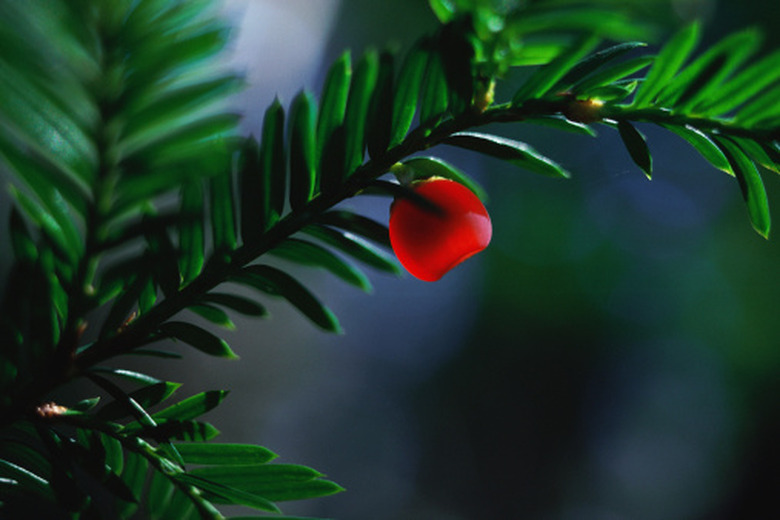Poisonous Ornamental Trees & Bushes With Red Berries
In the United States, many ornamental shrubs and small trees contain edible red, blue or white berries. Some red-berried specimens, however, are poisonous to humans and animals if eaten or touched. Common plants in this category include yews, asparagus fern, red-berried elder and red baneberry, to name a few.
Red Baneberry
A 1-to-3-foot-tall bushy shrub, red baneberry (Actaea rubra) contains poisonous red berries that resemble clusters of grapes. Red baneberry is native to the United States, where it is found throughout the country in deciduous or coniferous forests. All parts of red baneberry shrub are toxic, but the berries and roots contain the most dangerous levels. Children are especially susceptible to fatal poisoning, while adults and animals will experience gastrointestinal reactions. A distinguishing characteristic of the red baneberry shrub is its dense, white clusters of flowers, which bloom in April, May and June.
- In the United States, many ornamental shrubs and small trees contain edible red, blue or white berries.
- All parts of red baneberry shrub are toxic, but the berries and roots contain the most dangerous levels.
Red-Berried Elder
Also native to the United States, red-berried elder (Sambucus pubens) is a deciduous shrub found in mountainous regions, particularly in high-elevation fields and dense forests. All parts of the plant, including its red berries, contain cyanogenic glycoside and alkaloids, which are poisonous if swallowed. Symptoms of mild toxicity include nausea, vomiting and diarrhea, while high amounts can cause a person to fall into a coma. Aside from its tiny red berries, the red-berried elder is known for its cream-colored, three-to-five-parted flowers that appear in circular clusters.
Yew
The yew (Taxus spp.) is an ornamental evergreen shrub with fleshy red berries. The actual berries are safe to eat, but the green seed at the center of the berry contains alkaloid taxine, which is extremely toxic if swallowed. Other poisonous parts of the tree include the bark and leaves. Yew trees are seen in forests and open areas, or may be cultivated as a landscape shrub.
- Also native to the United States, red-berried elder (Sambucus pubens) is a deciduous shrub found in mountainous regions, particularly in high-elevation fields and dense forests.
- All parts of the plant, including its red berries, contain cyanogenic glycoside and alkaloids, which are poisonous if swallowed.
Asparagus Fern
The asparagus fern (Asparagus densiflorus) is a cousin of the asparagus plant and is native to South Africa. Asparagus ferns have bright red berries that are mildly toxic if swallowed. The toxic principle in the berries is unknown, but symptoms include gastrointestinal discomfort. The sap of the asparagus fern is also mildly toxic and causes skin irritation. Usually found indoors or as a small garden specimen, asparagus fern is a woody herb that is distinguished by its bell-shaped, yellowish-green flowers and fern-like leaves.
